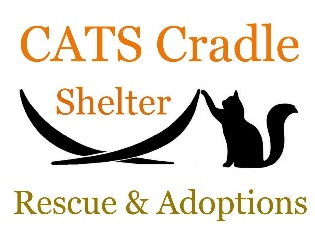Thank you to our guest writer, Nomi Berger!
While not the norm for most healthy cats, in special circumstances, your vet may recommend the use of an elevated cat bowl for YOUR kitty.
Which felines, you may wonder, fit into this purr-ticular category?
Cats with megaesophagus: A medical condition in which the esophagus doesn’t function properly, inappropriate muscle contractions in your cat’s esophagus affects her ability to move food smoothly and efficiently from her mouth to her stomach. This will cause her to regurgitate whatever undigested food remains shortly after she’s eaten. An elevated cat bowl will allow gravity to move the food she’s eating downward from her mouth and directly into her stomach. Now her esophagus no longer has to move that same food upward towards her stomach as it must when she’s hunched over her food bowl on the floor.
Cats with other eating and/or swallowing problems: If your kitty, for example, is suffering from a neurological disorder, severe dental disease or an acute upper respiratory infection that makes swallowing difficult, the use of an elevated food bowl will, again, overcome gravity, making it easier for her to take food into her mouth and then swallow it properly.
Cats with mobility issues: If your cat – particularly a senior cat — suffers from severe neck, back or joint pain in her front and/or hind legs, for example, bending down to eat from a bowl on the floor may be as cumbersome as it is challenging. Experiment, through a process of trial and error, with bowls of different heights to determine which one is most comfortable and most likely to ease at least some of her extreme discomfort.
Whatever your kitty’s issue, take into consideration both the height of the bowl and the diameter of the bowl (choose either a rounded or a slanted interior). Pay special attention to the material of the bowl. Generally, stainless steel, ceramic or glass bowls are best because they’re easier to sanitize – which is essential. Avoid plastic bowls since they’re prone to developing tiny surface scratches with use and over time, making them next to impossible to thoroughly disinfect.
Elevated bowls are available as individual bowls or as a combined stand that holds both a food bowl and a water bowl. Once again, experimentation is key. While some cats do well using a stand with paired food and water bowls, others, mainly messy eaters, don’t — and shouldn’t use them. Why? A pair of bowls, side by side, may lead to the water in their water bowl being contaminated with food particles from their food bowl far more often. For safety’s sake, clean your cat’s food and water bowls once a day — or after each meal if you’re feeding her wet canned food – to reduce the risk of bacteria contaminating them and thereby potentially posing a health risk to you both. While they can simply be handwashed in hot, soapy water, most bowls are dishwasher-safe and can, instead, be washed even more thoroughly and safely, in your dishwasher.

